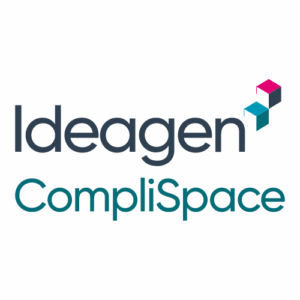While some businesses may have previously viewed compliance plans as afterthoughts or contingencies, they are increasingly recognised as essential protective measures. When implemented correctly, these plans can minimise the risks associated with non-compliance, such as financial penalties, sanctions and mitigating reputational damage, thus proving to be invaluable assets for any business.
In a digital age, now more than ever it is essential for businesses take steps towards preventing and proactively considering and managing potential risks and challenges that could emerge – safeguarding your business to not only foster trust and credibility but set the stage for long-term success. In this article we highlight five key areas that influence implementing and embedding compliance plans in the workplace, from human factors and understanding worker behaviour and sentiment towards compliance, to the cost of non-compliance and systems and technology strategies to consider to support business resilience.
Understanding and influencing behaviour in the workplace
To successfully implement compliance plans it is important to firstly understand the psychological factors influencing employees and their behaviour towards doing the right thing. Psychology plays a crucial role in ensuring the effectiveness of procedures and promoting compliance culture within organisations. People are hard-wired to make their lives as simple as possible – this means we often lean towards taking the path of least resistance, even if it means violating processes despite knowing we are in the wrong. Generally speaking, employees know how to follow procedures, they’re just not doing it. As a first step towards developing effective compliance plans, it is important to consider your current processes and procedures, and how simple they are to follow – not only for managers and those implementing the processes, but the organisation as a whole. If your processes are over-complicated, this could be a factor negatively impacting your ability to effectively embrace compliance in practice and it may be time for a review. Other factors to consider include whether your processes are easily accessible, are they manual, digitised, or a mix and are your compliance teams operating in silos or are they working with other departments to evaluate, understand and respond to risks in an enterprise-based approach.
The cost of non-compliance
There are various costs that are attributable to non-compliance, extending beyond purely financial or legal penalties. At a glance, there are three main ‘costs’ for businesses to consider when weighing up the consequences of a failure to comply with regulatory obligations:
- Financial implications
- Suspension of operations
- Reputational consequences
Financial implications are perhaps the most obvious, extending from fines, penalties, legal expenses and a potential loss of revenue which could arise from disruptions or the suspension of business operations or loss of business arising from reputational damage. Authorities such as ASIC and AUSTRAC can issue enforceable undertakings for non-compliance, resulting in the suspension of operations until issues are resolved. Outside of the financial ramifications, there can be significant administrative time spent to rectify issues of non-compliance – issues which could be partially or wholly preventable if effective compliance plans had been in place.
Perhaps the most significant risk for businesses is the reputational damage that can be suffered as a result of non-compliance or poorly implemented strategies to monitor, manage and respond to risks. This is an increasing issue in the digital age, and is exemplified as a consequence for Optus resulting from their data breach, where a class action was launched against the company claiming failure in its duty of care to protect users from harm.
Regardless of the cause, losses resulting from non-compliance can be significant, as further highlighted by Westpac’s historic $1.3 billion fine by ASIC for contravening anti-money laundering laws. While there are always costs and risks associated with running a business, it is important to implement a proactive approach across key areas of compliance – to not only protect your business, but increasingly to protect the data and other sensitive information provided by consumers.
Best practices for risk management and assessments
As mentioned previously, it is important to adopt an enterprise approach across your business to understand and effectively evaluate and respond to risks, however there are a few best practice tips to consider, whether you are getting started or are evaluating your existing systems. The process of conducting a comprehensive risk assessment across your business involves examining internal policies and procedures, external regulations and prioritising risks based on their likelihood, allowing businesses to effectively allocate resources to mitigate risks. Other considerations include:
- Strategic risk ranking and escalation processes
- Leveraging compliance technology
- Automating to reduce inefficiencies
Implementing best practice with the support of technology can help businesses to save hours previously spent – either capturing, reviewing, or reporting on various compliance tasks. By establishing a best practice approach to risk management, you are not only supporting your business through present day challenges but creating opportunities for growth and scalability in the future.
Guidelines for monitoring and reporting
To support the implementation of proper risk and control strategies, it is important for businesses to create clear frameworks to capture and record compliance information and data. Key areas and actions for businesses to focus on when developing plans to monitor and report include:
- Establishing frameworks to capture, monitor and improve – this allows not only for scalability, but equips organisations with the capabilities to prove at any point in time what has been done or what compliance actions are in place
- Create clear reporting channels to help foster a culture of transparency and trust
- Documenting compliance with evidence and capturing information in relevant policies or procedures that are easily accessible for everyone across the organisation
- Embrace digital transformation with software that provides customised workflows, review-dates and follow-up actions for key compliance tasks
Promoting compliance values with training and communication
Clear communication is vital for any business in achieving regulatory compliance. It not only ensures that all stakeholders have a shared understanding of obligations, policies and procedures, but also it helps to establish a culture of compliance where employees at all levels understand their responsibilities and the potential risks.
When it comes to training employees, first and foremost you identify whether you have a comprehensive training program in place, and whether this identifies not only the relevant regulatory requirements, but any specific policies and procedures applicable to your organisation. Ensuring policies and procedures are embedded not only through documents but as part of training procedures helps to further establish employees understanding of what is required, and the steps and support available should any issues arise. Training is important to develop in line with psychological factors mentioned previously – by incorporating interactive case studies and real-life examples into daily work life with the support of regular and ongoing training sessions you can help reinforce employee knowledge while embedding best practice as part of their everyday work activities.
Conclusion
In an increasingly evolving digital and regulatory landscape, it is a significant risk for many businesses to have outdated or ineffective compliance plans in place – by establishing a robust compliance plan, you are protecting your business from consequences whilst implementing measures for business growth and resilience into the future.
In their guide ‘Building a robust compliance plan: safeguard your business with these proven strategies’ Ideagen CompliSpace provide an in-depth overview to help businesses understand the importance of developing robust compliance plans and factors to consider when evaluating your businesses current state. Download the guide here for further insights on how you can transform your approach to compliance and start safeguarding your business today.
About Ideagen CompliSpace
Ideagen CompliSpace are experts in governance, risk, compliance and policy management, helping businesses of all sizes, from ASX-listed entities to private organisations across Australia to meet their governance, risk, compliance and policy management obligations with scalable and practical compliance tools.
For more information, visit the Ideagen CompliSpace website.









